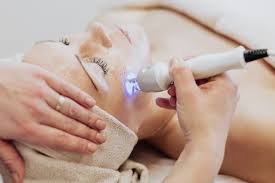Dermatology focuses on skin care and maintenance using a variety of procedures and techniques. The primary goal is to support healthy skin function and to help individuals achieve specific cosmetic or medical objectives. Patients can smooth the skin, reduce the appearance of scars, and screen for skin cancer. Here are several different treatments offered by dermatologists:
Light and Laser-Based Techniques
Light and laser technologies offer targeted approaches for managing various skin characteristics. These devices use selected wavelengths of light to influence pigments, small blood vessels, or water within the skin. Laser resurfacing removes outer skin layers to address textural irregularities, and it can fade scars or fine lines in the process. Intense pulsed light (IPL) uses broad-spectrum light to address pigmentation concerns or vascular features. These technologies offer a key option, enabling precise adjustment of skin appearance.
Injectable and Filler Treatments
Introducing substances beneath the skin is another fundamental dermatological approach; this category involves both neurotoxins and dermal fillers, each with a targeted outcome. Neurotoxins, like botulinum toxin, work to temporarily relax specific facial muscles. This effect helps reduce the visibility of lines formed by repeated movements.
Dermal fillers, usually composed of gel-like materials such as hyaluronic acid, supplement facial volume, smooth static lines, and enhance contour. These treatments help restore a more balanced appearance and lift certain features, such as the cheeks or lips. The choice of product and site depends on the individual’s goals and the properties of the skin involved.
Topical Formulations
Applying topical preparations represents a key strategy in dermatology. These substances are placed directly on the skin, and they are designed to deliver active components precisely where they are needed. Manufacturers produce creams, gels, lotions, ointments, and serums for a variety of needs. Their functions can range from providing hydration and sun defense to addressing pigmentation differences and reducing inflammation. It is fundamental to follow usage instructions carefully for optimal outcomes. The active ingredients found in these topicals differ, with their application tailored to the individual’s presentation and target area.
Cryotherapy and Surgical Procedures
Cryotherapy uses extremely cold substances, such as liquid nitrogen, to freeze and remove targeted skin tissue. This procedure supports the removal of benign growths such as warts or similar lesions. The process causes the destruction of the abnormal cells in the treated region.
In other circumstances, minor surgical methods are fundamental. Procedures like excisions involve surgically removing a lesion, while biopsies involve obtaining a sample of skin for detailed review. Both types of interventions may be performed in a controlled clinical environment and follow standardized protocols to promote safety and accuracy.
Visit a Dermatology Clinic Today
Dermatological care includes techniques ranging from specialized topical treatments to light-based or surgical interventions. Each approach provides unique benefits, and they can be tailored to meet individual needs and goals. When deciding which option suits your circumstances, consult a qualified dermatology provider. These professionals provide various treatments, including chemical peels and Mohs surgery, to support your skin’s health and appearance, and they help you make informed care decisions. Schedule a dermatology consultation to discuss which treatments align with your wellness objectives.









